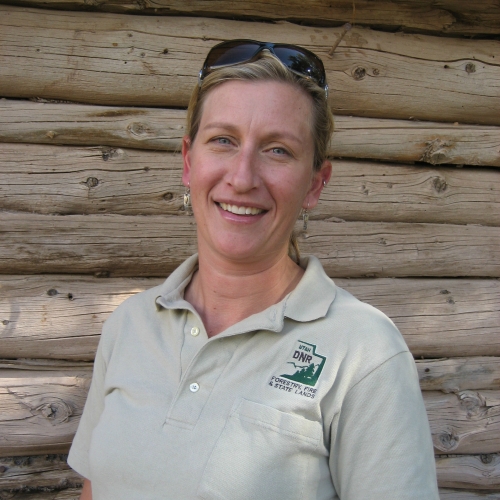Planner and the Forest Legacy Coordinator
Utah Division of Forestry, Fire & State Lands
Bio:
Ms. Vernon, AICP is a Planner and the Forest Legacy Coordinator for the Utah Division of Forestry, Fire & State Lands. Over the last 15 years, Laura Burch Vernon has worked with federal, state, and local governments and industry leaders on contemporary planning and environmental policy issues in the West. Her education and professional experience focuses on land use planning, public involvement, socioeconomic analysis, project management, and technical writing. Laura received her Master of Public Administration from the University of Utah in 2003. Having served as the project manager for the Great Salt Lake Management Plan, she is currently overseeing completion of the Great Salt Lake Integrated Water Resources Management Model and the Jordan River Comprehensive Management Plan.
Title: What's going to happen to Great Salt Lake
10:30am - Thursday, May 12th
Presenters: Jeff DenBleyker, Laura Vernon
Abstract: Is Great Salt Lake drying up? How might forecasted population and economic growth in Northern Utah change water levels in the lake? How might an extended drought affect the lake? What does that mean to Great Salt Lake’s natural resources, the economic and ecological benefits that are derived from them, and the people who live near its shores? These are all questions the State of Utah has been grappling with that this project hopes to help begin to answer.
A recurring challenge for State regulatory and resource agencies is defining and understanding how variable precipitation and water management in Great Salt Lake’s watershed can influence the lake’s water levels and salinity and subsequently the resources the lake supports. State agencies have not had an effective tool at their disposal that integrates available information to better understand these issues and support sustainable management of Great Salt Lake resources – until now.
The purpose of the Great Salt Lake IWRM model project is to provide state agencies and stakeholders with a tool that:
- Describes how changes in water management and availability in Great Salt Lake and its watershed could impact the lake’s water levels and salinity,
- Could be used to evaluate potential impacts to and changes in the lake’s resources, and
- Will serve as a foundation for addressing future management challenges.
This tool will allow State agencies to understand the lake’s drivers of change, understand the potential changes and risks Great Salt Lake and its resources may encounter, incorporate these findings into planning efforts, and sustainably manage the lake’s economic and ecological resources.
This session will provide an overview of the need for and purpose of this tool, a description of our approach for model development, and a preview of the model’s interface.
Abstract Summary: Changes in Great Salt Lake have historically been dramatic. State agencies are creating a tool that will describe how changes in the lake’s watershed and climate could impact its water levels and salinity. This tool will serve as a foundation for future management of the lake’s economic and ecological resources.

